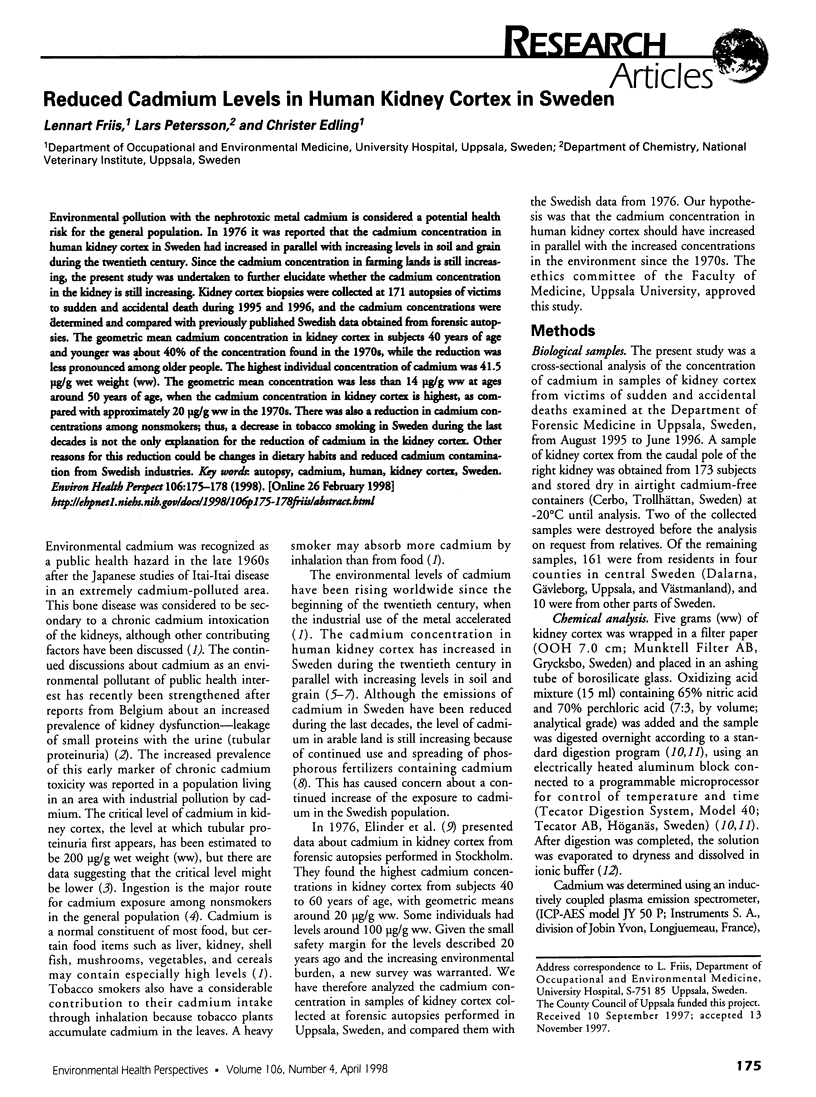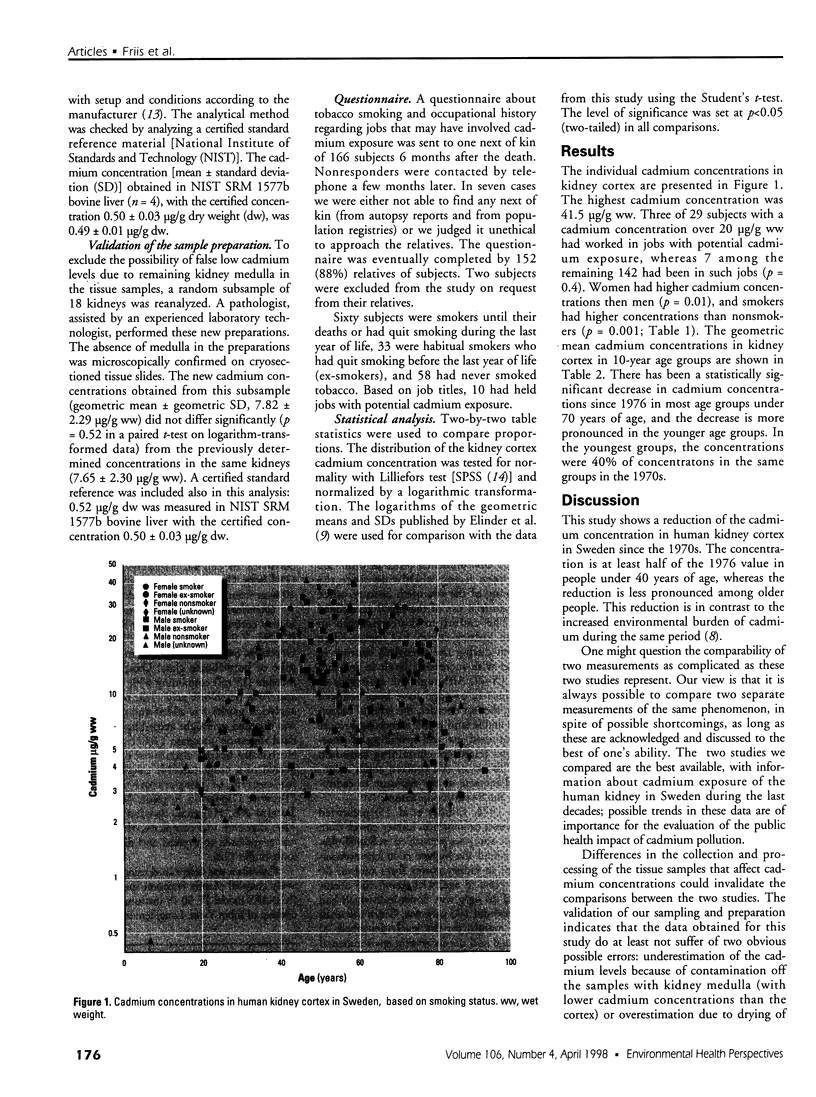Abstract
Environmental pollution with the nephrotoxic metal cadmium is considered a potential health risk for the general population. In 1976 it was reported that the cadmium concentration in human kidney cortex in Sweden had increased in parallel with increasing levels in soil and grain during the twentieth century. Since the cadmium concentration in farming lands is still increasing, the present study was undertaken to further elucidate whether the cadmium concentration in the kidney is still increasing. Kidney cortex biopsies were collected at 171 autopsies of victims to sudden and accidental death during 1995 and 1996, and the cadmium concentrations were determined and compared with previously published Swedish data obtained from forensic autopsies. The geometric mean cadmium concentration in kidney cortex in subjects 40 years of age and younger was about 40% of the concentration found in the 1970s, while the reduction was less pronounced among older people. The highest individual concentration of cadmium was 41.5 microg/g wet weight (ww). The geometric mean concentration was less than 14 microg/g ww at ages around 50 years of age, when the cadmium concentration in kidney cortex is highest, as compared with approximately 20 microg/g ww in the 1970s. There was also a reduction in cadmium concentrations among nonsmokers; thus, a decrease in tobacco smoking in Sweden during the last decades is not the only explanation for the reduction of cadmium in the kidney cortex. Other reasons for this reduction could be changes in dietary habits and reduced cadmium contamination from Swedish industries.
Full text
PDF



Images in this article
Selected References
These references are in PubMed. This may not be the complete list of references from this article.
- Andersen O., Nielsen J. B., Nordberg G. F. Factors affecting the intestinal uptake of cadmium from the diet. IARC Sci Publ. 1992;(118):173–187. [PubMed] [Google Scholar]
- Buchet J. P., Lauwerys R., Roels H., Bernard A., Bruaux P., Claeys F., Ducoffre G., de Plaen P., Staessen J., Amery A. Renal effects of cadmium body burden of the general population. Lancet. 1990 Sep 22;336(8717):699–702. doi: 10.1016/0140-6736(90)92201-r. [DOI] [PubMed] [Google Scholar]
- Elinder C. G., Lind B., Kjellström T., Linnman L., Friberg L. Cadmium in kidney cortex, liver, and pancreas from Swedish autopsies. Estimation of biological half time in kidney cortex, considering calorie intake and smoking habits. Arch Environ Health. 1976 Nov-Dec;31(6):292–302. doi: 10.1080/00039896.1976.10667239. [DOI] [PubMed] [Google Scholar]
- Flanagan P. R., McLellan J. S., Haist J., Cherian G., Chamberlain M. J., Valberg L. S. Increased dietary cadmium absorption in mice and human subjects with iron deficiency. Gastroenterology. 1978 May;74(5 Pt 1):841–846. [PubMed] [Google Scholar]
- Kjellström T., Linnman L., Elinder CarlGustaf Variation of cadmium concentration in Swedish wheat and barley. An indicator of changes in daily cadmium intake during the 20th century. Arch Environ Health. 1975 Jul;30(7):321–328. doi: 10.1080/00039896.1975.10666714. [DOI] [PubMed] [Google Scholar]
- Willers S., Attewell R., Bensryd I., Schutz A., Skarping G., Vahter M. Exposure to environmental tobacco smoke in the household and urinary cotinine excretion, heavy metals retention, and lung function. Arch Environ Health. 1992 Sep-Oct;47(5):357–363. doi: 10.1080/00039896.1992.9938375. [DOI] [PubMed] [Google Scholar]
- Willers S., Schütz A., Attewell R., Skerfving S. Relation between lead and cadmium in blood and the involuntary smoking of children. Scand J Work Environ Health. 1988 Dec;14(6):385–389. doi: 10.5271/sjweh.1905. [DOI] [PubMed] [Google Scholar]



